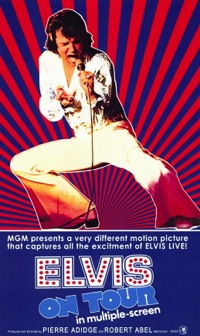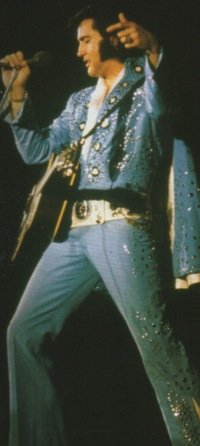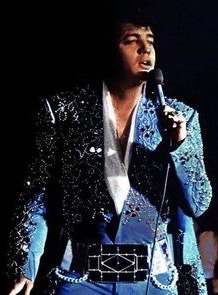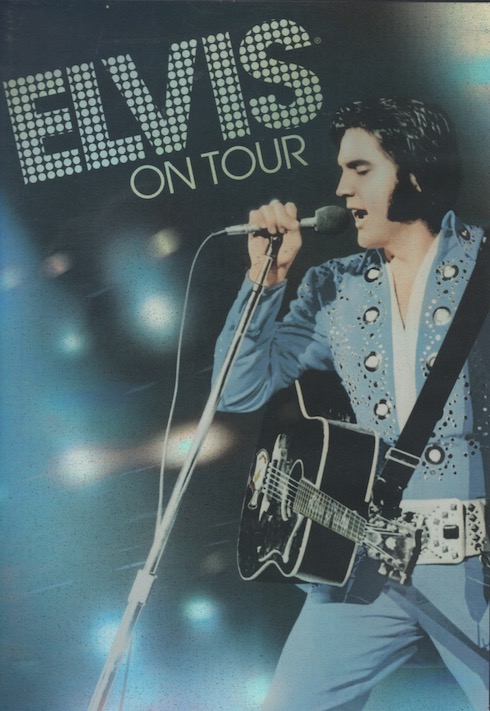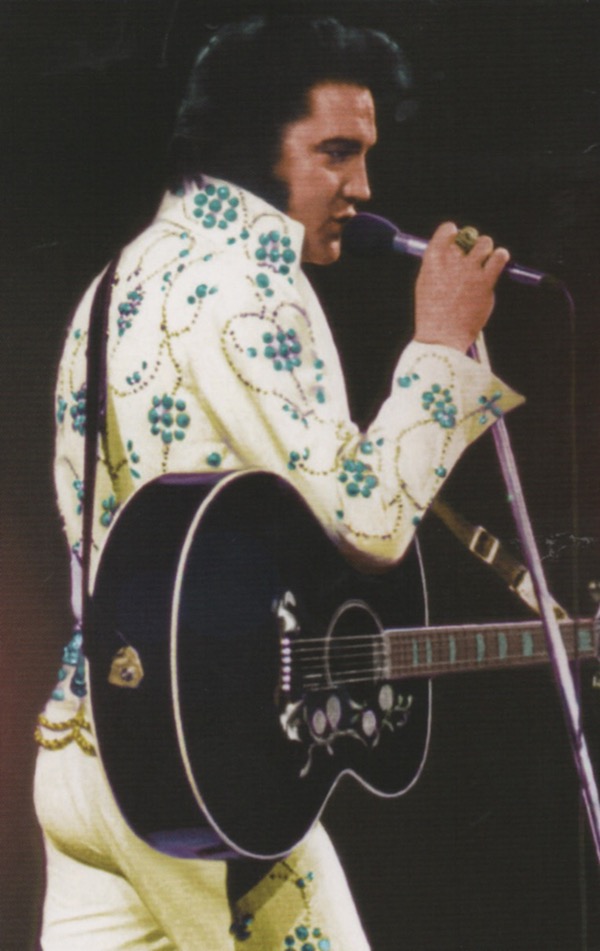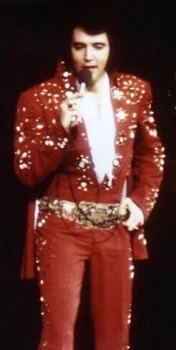Elvis History Blog
Elvis On Tour
Elvis Movie #33
Metro-Goldwyn-Mayer | 1972
I first saw Elvis On Tour at a Gulfport, Mississippi, theater while on military duty in 1972. As an Elvis fan, the film so impressed me that I went back a few days later to see it again, this time taking a couple of my military buddies with me. I felt Elvis On Tour was so dynamic that it would surely convert my Elvis-mocking friends into new Elvis fans. Well, the documentary didn’t exactly show my friends the error of their ways as I had hoped, but they did come away admitting that Elvis had the ability to sing “some songs” well.
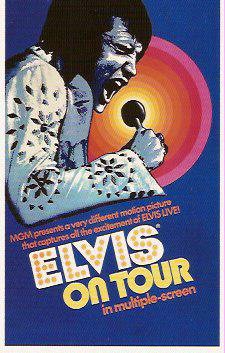
Elvis On Tour mainly covers Presley’s 15-city tour in April of 1972. Producer-directors Pierre Adidge and Robert Abel had the film ready for a media preview at MGM Studios in Culver City on October 30, 1972, and national release to theaters just two days later. Variety’s reviewer, identified only as “Murf,” attended the Culver City preview, and his review of the film appeared in the show biz weekly on November 8, 1972. Positive throughout, Murf began his review as follows.
“‘Elvis On Tour,’ followup to ‘Elvis—That’s The Way It Is’ of two years ago, is a bright entertaining pop music documentary detailing episodes in the later professional life of Elvis Presley, the pioneer Pied Piper of rock music. Multi-panel composition and zesty editing make for a pleasant 92 minutes, and the … production should do well at the youth [box office]. Martin Scorsese’s montage supervision highlights a top technical effort.”
• Scorsese gave life to Elvis On Tour
Scorsese, of course, would later build an impressive reputation as a Hollywood director, but in 1972 his creative use of the split-screen format in Elvis On Tour breathed life into a film that otherwise might have been pretty dreary. In addition to showing the star on stage from several viewpoints, the montage approach keeps the viewer’s eye moving back-and-forth from the star to the musicians to the concert audience and elsewhere as the screen splits into two, three, and sometimes four panels. (Please see Reader Comment below)
In one memorable montage, Elvis, in three different-colored jump suits, is shown taking the stage in three different cities. The scene spotlights Presley’s co-star if the film—his flashy attire. Variety noted that Elvis’ stage costumes fit his super-power persona.
“Bill Belew’s wardrobe for Presley’s on-stage concert appearances make the star resemble Captain Marvel, which isn’t far off the mark considering what Presley has accomplished in an 18-year period of worldwide fame. The musicianship is updated of course, but the adroit insertion of some old Ed Sullivan guestint footage places the early days in complementing, not contrasting context.”
While I agree with Murf that the inserted Sullivan footage provides a suitable connection with Presley’s past, for me it establishes a clear contrast between the young rocker of the fifties and his glittery re-embodiment in the early seventies. Elvis’s sheer joy and energy on Sullivan’s stage, supported as he was by a mere handful of musicians and singers, is in clear contrast with the 37-year-old icon, an army of backup musicians both behind and in front of him, struggling mightily to conjure up the fire of his youth. Perhaps the contrast seems greater now than it did when the film first appeared. When viewing Elvis On Tour today, the viewer is armed with the knowledge of Presley’s subsequent physical decline over the following few years. We didn’t know it was coming in 1972.
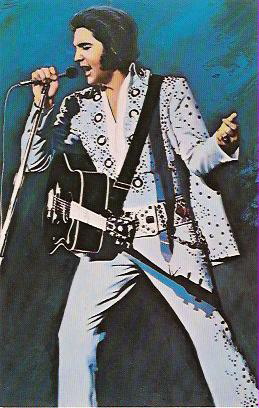
Although Variety predicted success for Elvis On Tour, the film performed only moderately at the box office. It reached no higher than #13 on Variety’s weekly list of top-grossing films. During its first weekend of release, it played in 187 theaters in 105 cities, grossing about $500,000.
• Canby in The New York Times called film a “storybook myth”
The film’s debut in the country’s largest city, however, was delayed seven months, not opening in New York until June 6, 1973. The next day Vincent Canby reviewed Elvis On Tour in The New York Times. In contrast to Variety’s positive review, Canby focused on the film’s shortcomings. Its Achilles’ heel, he judged, was the star himself. “A natural spin-off of the rock concert tour is the rock concert tour film,” noted Canby. “Pierre Adidge and Robert Abel are such experienced hands that I suspect they were inhibited by the magnitude of their latest subject, Elvis Presley. Or perhaps—dare I say?—his minitude.”
In Canby’s view, Elvis On Tour did not live up to its billing as an “intimate portrait” of Elvis. “The camera never catches him in a truly candid moment,” Canby explains. “Close-ups do not reveal anything but, rather, they enshrine an ideal.”
The Times review further argues that Elvis reveals little about himself “while getting on and off airplanes, on and off buses, and in and out of limousines. Strip away the storybook myth and—lo—there is a storybook myth underneath; a nice, clean-cut, multimillionaire pop idol who is, offstage, hard-working and friendly and something less than a riveting personality. The essential blandness of the offstage Elvis has the effect of diminishing the impact of what we see of the onstage performances.”
• Elvis On Tour marked beginning of the end for Elvis
Even for this Elvis fan, it’s difficult to refute Canby’s premise. Elvis On Tour was fashioned to perpetuate the Presley fairytale that his fans had come to believe. No doubt Elvis and Colonel Parker insisted that the film’s producers not disturb the myth. We know now that in Elvis’ personal life the forces of self-destruction were already at work. Ironically, two members of Elvis’ inner circle, Red West and Sonny West, whose book would eventually expose their boss’ dark side, are seen often in Elvis On Tour.
Watching Elvis On Tour today is a conflicting experience. On one hand there is the pleasure of seeing the star near the top of his game. But it would be the last such experience most of us would ever have. Seeing him on the screen, it’s hard to believe that Elvis Presley would be dead just five short years later. Elvis On Tour was immensely gratifying when I first saw it in 1972. However, whenever I’ve watched it during the years since then, I can’t help but see in it the beginning of the end for Elvis Presley. — Alan Hanson | © November 2008
Reader Comment: In your "history" of Elvis on Tour, your comment about Martin Scorcese is completely incorrect. The ONLY segment that Scorcese worked on in that film is one small part where EP was in a limo and they were going past bridges and landmarks. He CERTAINLY did not have anything to do with the split screen technology or back and forth between Elvis/audience/ stage as you say. I know this for a fact. This technology was pioneered by my brother Pierre Adidge. He was also the one who supervised Scorcese and mentored him. Please, give credit where it's due. Thank you. — Jeannine
Go to Elvis Movies
Go to Home Page
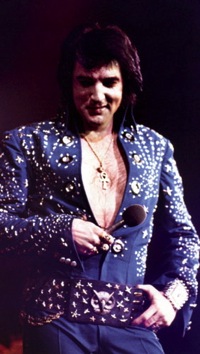
"Watching Elvis On Tour today is a conflicting experience. On one hand there is the pleasure of seeing the star near the top of his game. But it would be the last such experience most of us would ever have."
